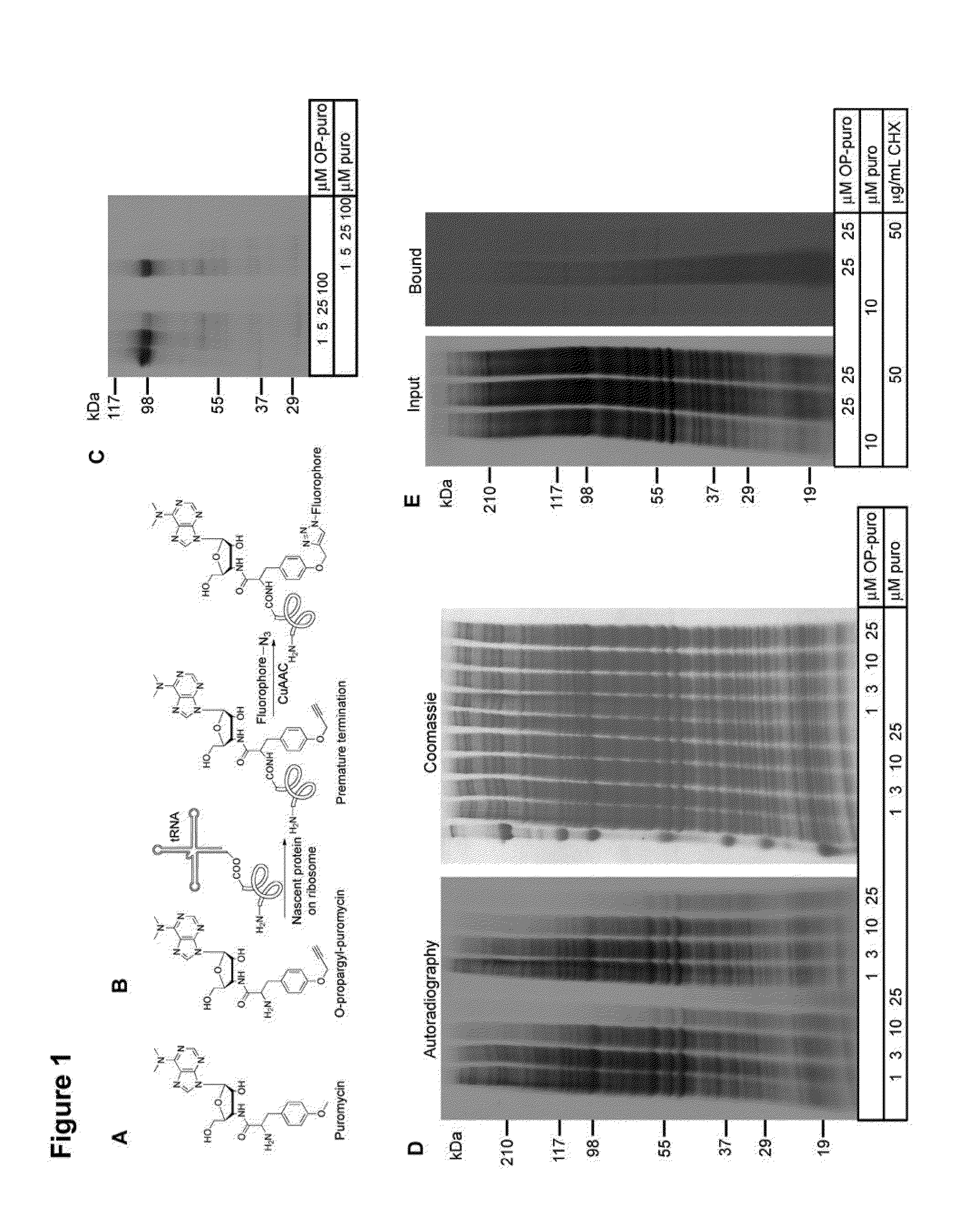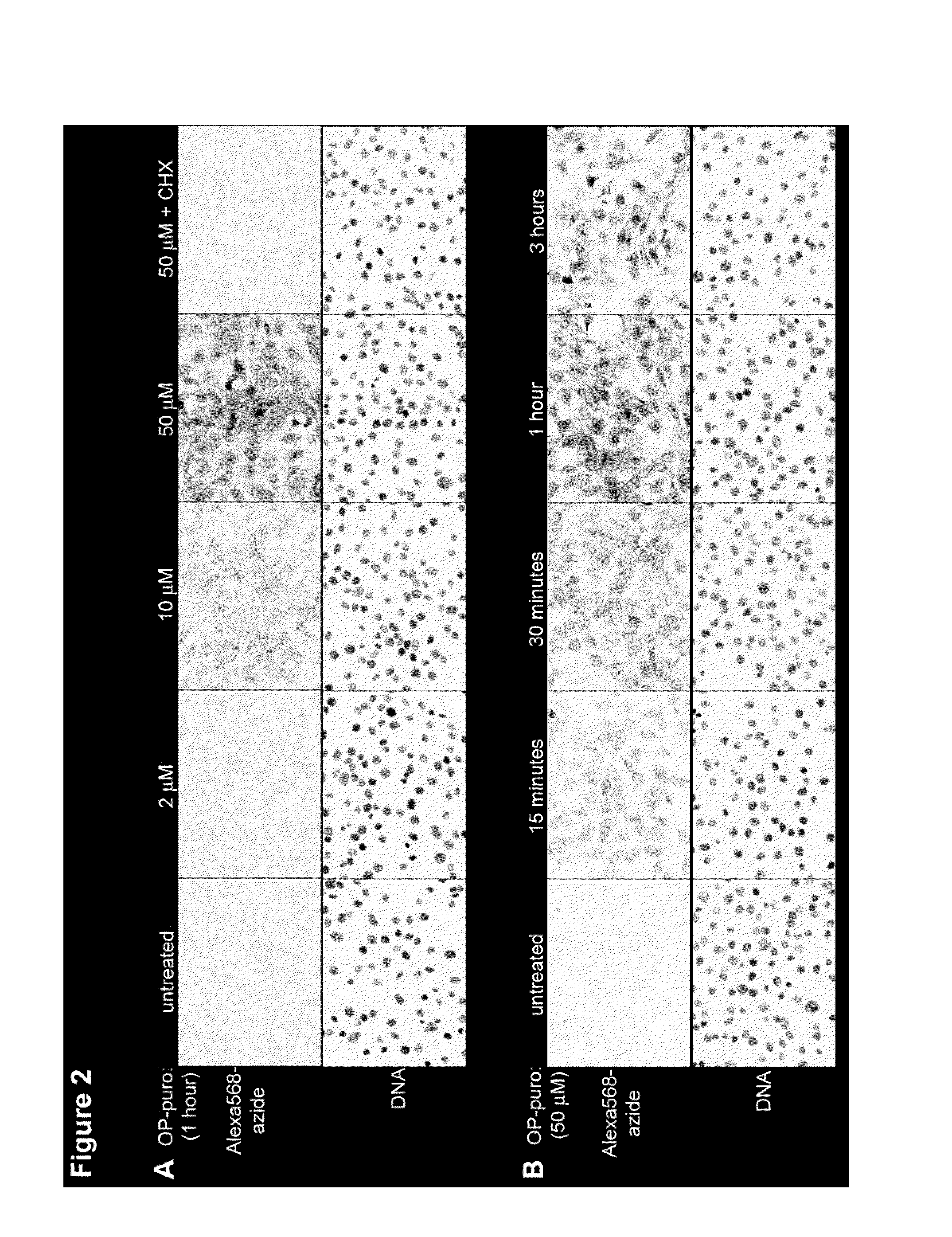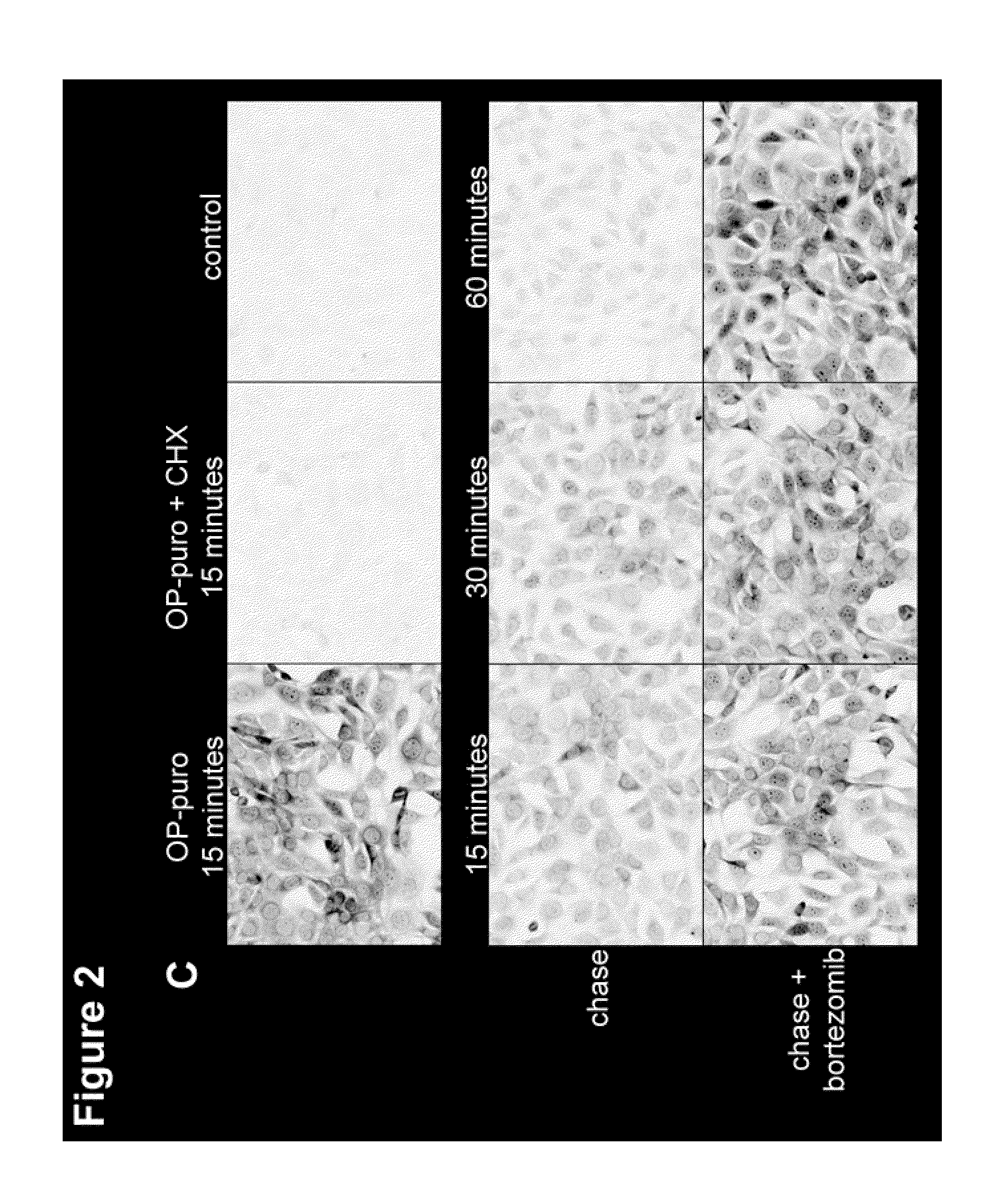Methods and compositions for labeling polypeptides
a polypeptide and polypeptide technology, applied in the field of methods and compositions for labeling polypeptides, can solve the problem of limiting the temporal resolution of this method, and achieve the effect of broad application for imaging
- Summary
- Abstract
- Description
- Claims
- Application Information
AI Technical Summary
Benefits of technology
Problems solved by technology
Method used
Image
Examples
example 1
Synthesis of O-propargyl-puromycin
[0215]
O-Propargyl Boc-Tyr-OMe (1)
[0216]A solution of Boc-Tyr-OMe (2.01 g, 6.80 mmol), propargyl bromide (80% wt solution in toluene, 910 μL, 8.16 mmol), K2CO3 (2.82 g, 20.4 mmol) in dry DMF (19 mL) was stirred for 17 h at room temperature. After dilution with water (200 mL), the resulting mixture was extracted with EtOAc (2×100 mL). The combined organic layers were washed with saturated NaHCO3 and brine followed by drying over Na2SO4. After removal of the solvent in vacuo, the crude product was obtained as a yellow liquid and was used in the next step without further purification.
O-Propargyl Boc-Tyr-OH (2)
[0217]A solution of O-Propargyl Boc-Tyr-OMe 1 (2.27 g, 6.80 mmol) was dissolved in 27 mL 1,2-dichloroethane and after addition of trimethyltin hydroxide (3.69 g, 20.4 mmol), the mixture was heated to 80° C. until TLC analysis indicated a complete reaction. The mixture was then concentrated in vacuo, and the residue was dissolved in EtOAc (100 mL). ...
example 2
OP-puro Labeling of Cultured Cells and Detection by Fluorescence Microscopy
[0221]A chemically-tagged puro was developed to label newly synthesized proteins, for subsequent imaging by fluorescence microscopy and for isolation by affinity chromatography. Structure-activity studies of puro (Nathans et al. Nature 197:1076-1077 (1963); Pestka et al. Antimicrob. Agents. Chemother. 4(1):37-43 (1973); Eckermann et al. Eur. J. Biochem. 41(3):547-554 (1974); Vanin et al. FEBS Lett. 40(1):124-126 (1974); Lee et al. J. Med. Chem. 24(3):304-308 (1981)) indicated that the molecule tolerates modifications of the O-Me phenyl ring, without significant loss of activity. O-propargyl-puromycin (OP-puro, FIG. 1B), a puro analog that bears a terminal alkyne group, was synthesized to allow detection of nascent polypeptide chains by copper(I)-catalyzed azide-alkyne cycloaddition (CuAAC) (Wang et al., J. Am. Chem. Soc. 125(11):3192-3193).
[0222]NIH-3T3 cells were grown on glass coverslips in Dulbecco modifie...
example 3
Inhibition of Translation by OP-puro
[0228]A plasmid carrying a GFP fusion of the mouse Suppressor of Fused (SuFu) gene under the control of an SP6 RNA polymerase promoter was used to generate 35[S]-Met-labeled GFP-SuFu by in vitro translation in rabbit reticulocyte lysates (TNT SP6 Quick coupled transcription / translation kit, Promega), according to the manufacturer's instructions. Translation reactions were performed for 1 hour at 30° C., in the absence or presence of varying concentrations of puro and OP-puro. The reactions were stopped by addition of SDS-PAGE sample buffer with 50 mM DTT and boiling. Equal amounts of lysate were separated by SDS-PAGE and the amount of in vitro translated GFP-SuFu was determined by autoradiography.
[0229]To measure translation inhibition in cells, human embryonic kidney 293T cells were pre-incubated for 30 minutes with varying concentrations of puro or OP-puro, in complete media. The cells were then incubated for 3 hours in Met-free media supplement...
PUM
| Property | Measurement | Unit |
|---|---|---|
| Composition | aaaaa | aaaaa |
| Fluorescence | aaaaa | aaaaa |
Abstract
Description
Claims
Application Information
 Login to View More
Login to View More - R&D
- Intellectual Property
- Life Sciences
- Materials
- Tech Scout
- Unparalleled Data Quality
- Higher Quality Content
- 60% Fewer Hallucinations
Browse by: Latest US Patents, China's latest patents, Technical Efficacy Thesaurus, Application Domain, Technology Topic, Popular Technical Reports.
© 2025 PatSnap. All rights reserved.Legal|Privacy policy|Modern Slavery Act Transparency Statement|Sitemap|About US| Contact US: help@patsnap.com



